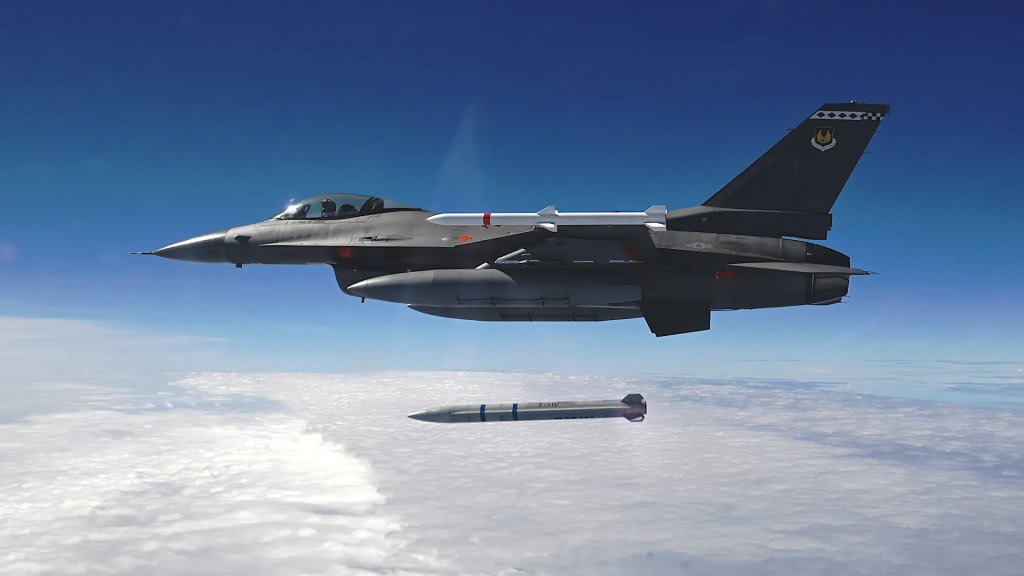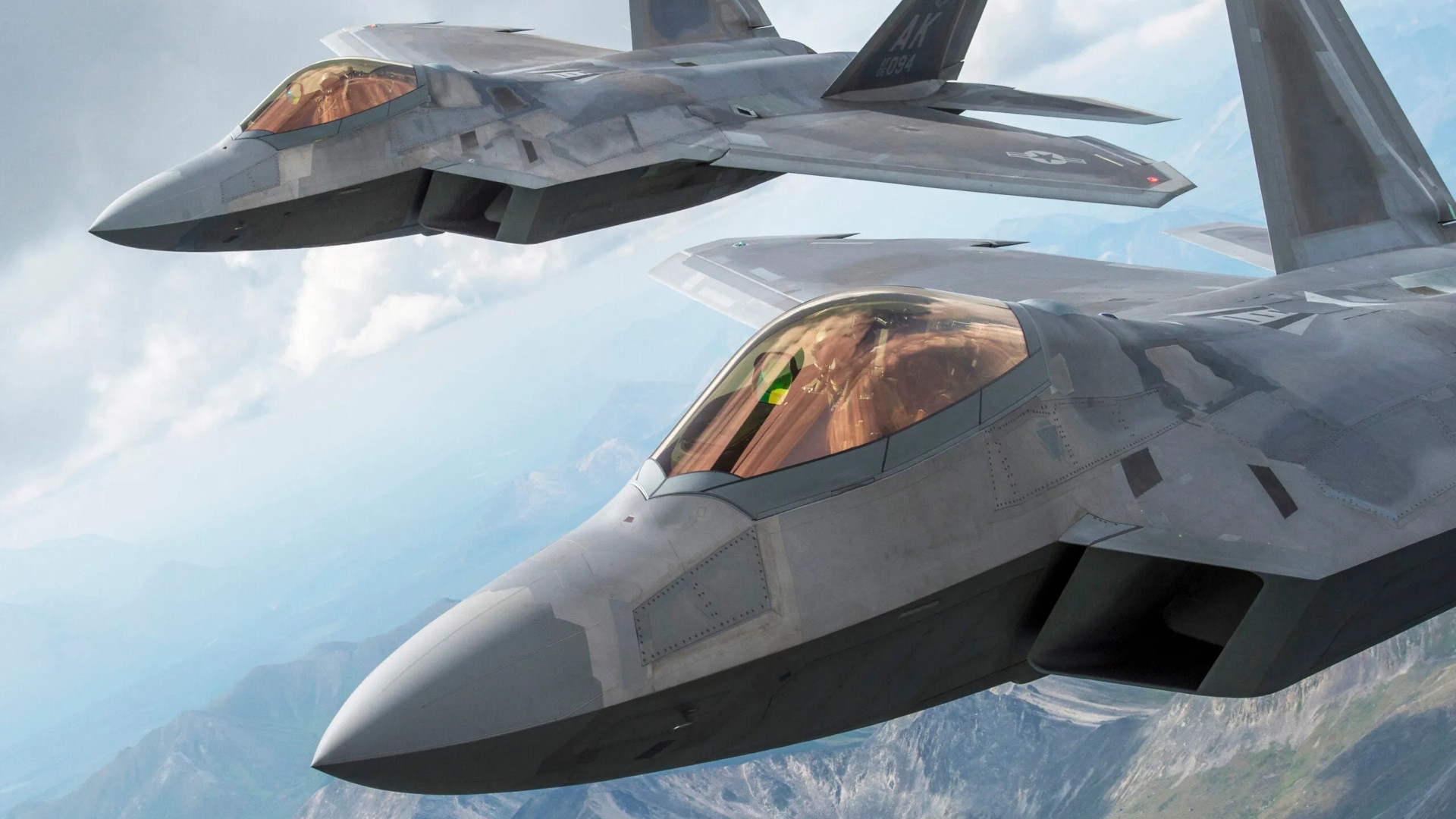In the face of post-Cold War drawdowns, the U.S. Air Force pushed ahead with buying the famously expensive F-22 Raptor stealth fighter in part because of a perhaps unexpected reason: concerns about Syrian air defenses.
Secretary of the Air Force Frank Kendall talked about the Syrian connection to the F-22’s story during an online discussion that the Air & Space Forces Association’s Mitchell Institute for Aerospace Studies hosted earlier today. Kendall is an Army veteran and career civil servant who has held various positions within the Department of Defense and the Air Force since the 1980s, including ones in which he was directly involved in crafting requirements for what became the F-22.
The Air Force selected Lockheed’s YF-22 as the winner of its Advanced Tactical Fighter (ATF) competition, beating out Northrop’s YF-23, in 1991 just as the Soviet Union was collapsing. U.S. military spending notably contracted following the end of the Cold War ended with various high-profile programs being canceled or severely truncated, as a result. Questions were raised about the multi-billion-dollar F-22 acquisition program.

“The scenario that we used … on a requirements basis to convince ourselves, [and] Secretary [of Defense Dick] Cheney, that we should continue with the F-22 was Syria,” Kendall said today. “Right after the Cold War, … they had [one of] the most modern … integrated air defenses at the time.”
During the 1970s and 1980s, the Syrian military did amass a significant array of Soviet short, medium, and long-range surface-to-air missile systems. This included fixed site types like the SA-2 Guideline and SA-5 Gammon, self-propelled designs like the SA-6 Gainful and the SA-11 Gadfly, and multiple variants of the Strela family of man-portable air defense systems (MANPADS).


In the end, the F-22 program was still significantly scaled back ostensibly over its high cost and the Air Force only received 187 examples in the end, a decision widely viewed today as near-sighted.
It’s certainly interesting to consider that Syrian air defenses were once significant enough to drive the development of something like the F-22, which remains the most capable fighter in U.S. inventory today. Syria was actually the first locale where the Raptor was employed in combat, with the stealthy jets striking ISIS terrorists in the country in 2014. F-22s were utilized in part because of their survivability against potential threats from the regime in Damascus. F-22s continued to operate over the country for years afterward to help shield U.S. forces and their local partners from Syrian forces, as well as their Iranian and Russian allies.

Kendall’s comments about the Syrian scenario and the F-22 came in response to a question about future stand-in strike capabilities.
“It depends upon who you’re standing against … Clearly, we need some of that capability [against] critical targets. It can be accomplished in different ways. You can do it with stand-off weapons, up to a point, but there’s a cost associated with that,” Kendall explained, after which he shared the F-22/Syria anecdote.
“Our pacing challenge today is not Syria. It’s much tougher,” he continued. “You gotta take a harder look at what’s the right mix and what do you want to do with it. The other thing that’s true is that Syria was not a nuclear power. Russia and China are nuclear powers with a lot of nuclear weapons. So what you would do in a conventional conflict with them has to be done with an eye to what are the consequences in the strategic [realm].”
The Air Force is currently in the process of acquiring a new dedicated Stand-in Attack Weapon (SiAW) missile to “provide [a] capability to strike rapidly re-locatable targets that create the Anti-Access/Area Denial (A2/AD) environment,” according to the service’s 2025 Fiscal Year budget request. Those “targets include Theater Ballistic Missile Launchers, Land Attack and Anti-Ship Cruise Missile Launchers, Jammers, Anti-Satellite Systems, and Integrated Air Defense Systems.”

Northrop Grumman is leading the development of the SiAW, which is a derivative of the company’s AGM-88G Advanced Anti-Radiation Guided Missile-Extended Range (AARGM-ER) missile. AARGM-ER, a program the U.S. Navy is leading, is intended primarily to punch holes in enemy air defenses, though it will also have a more general secondary strike capability. The stealthy F-35A Joint Strike Fighter is expected to be the first platform armed with the SiAW, which could find its way onto other aircraft and that you can read more about here.
Kendall’s comments today about the capability mixes and cost considerations also come as the service’s plans for a new sixth-generation stealth combat jet, as part of its larger Next Generation Air Dominance (NGAD) modernization initiative, are very much in question. A final decision on how to proceed with that program has now been pushed into next year when President-elect Donald Trump takes office. The fate of other Air Force advanced aviation efforts, including its Collaborative Combat Aircraft (CCA) drone program and plans to acquire stealthy aerial refueling tankers, are also intertwined with the NGAD combat jet decision.
The current “pacing challenge,” or “China, China, China” as Kendall has liked to say during his tenure as Air Force Secretary, will be a key factor in any decision-making about Air Force modernization plans, just like Syria apparently was for the F-22.
Contact the author: joe@twz.com
